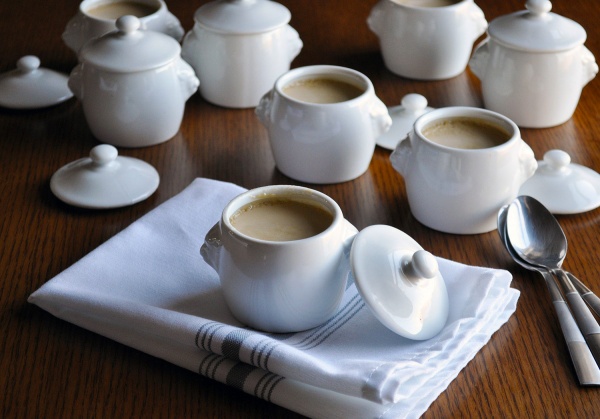Cooking Creme Brulee
Asked by Noam. Answered on 19th April 2013
Full question
Hi Nigella and Team Cupcake! I have made Nigella's Christmas Creme Brulee from Domestic Goddess twice so far, the first time I think I overcooked it, and the second time I undercooked it. Could you please tell me to what internal temperature do I need to bring the custard to? I have an instant read thermometer. Also, should lemon curd be brought to the same temperature? Thanks!
Our answer
Nigella's Chrsitmas Creme Brulee is made by cooking the custard in a saucepan rather than baking the custard in the oven in a water bath. This gives a better opportunity to keep a check on the temperature of the custard as it cooks. An instant read or digital probe thermometer is very useful for this, though you could also use a sugar thermometer (jam/candy thermometer).
Eggs mixed with other ingredients tend to coagulate, or thicken, at a slightly higher temperature than eggs on their own. For custard, the mixture should start to thicken at around 70c/158F and should be fully cooked by 75-76c/167-169F. The custard should never be taken over 80c/176F. The custard should be thick enough to coat the back of a spoon and if you run your finger through the custard on the back of the spoon the line should remain visible. If the custard flows back then it is not cooked enough. Also with a custard it will not get thicker the longer you cook it, it is the number of egg yolks that will determine the thickness.
As Nigella mentions in her recipe, it is a good idea to have a sinkful of cold water at the ready as if it looks as if the custard is in danger of overcooking then you can plunge the base of the saucepan ito the water to cool the custard quickly. Pre-freezing the serving dish will also help to cool the custard quickly. If you are worried then you can use a low heat to cook the custard, it will just take longer. If the custard is only very slightly overcooked then you may be able to rescue it by straining the custard, to remove any large flecks of overcooked egg, and then giving it a quick whizz in a liquidizer or with a hand blender.
With lemon curd the acid in the lemon juice acts on the protiens in the egg yolks and prevents them from curdling, even at higher temperatures. Therefore you can cook lemon curd to almost boiling point without worrying. We would use the back of the spoon test, as outlined above, to check when the lemon curd has cooked fully.






Tell us what you think
Thank you {% member.data['first-name'] %}.
Explore more questionsYour comment has been submitted.